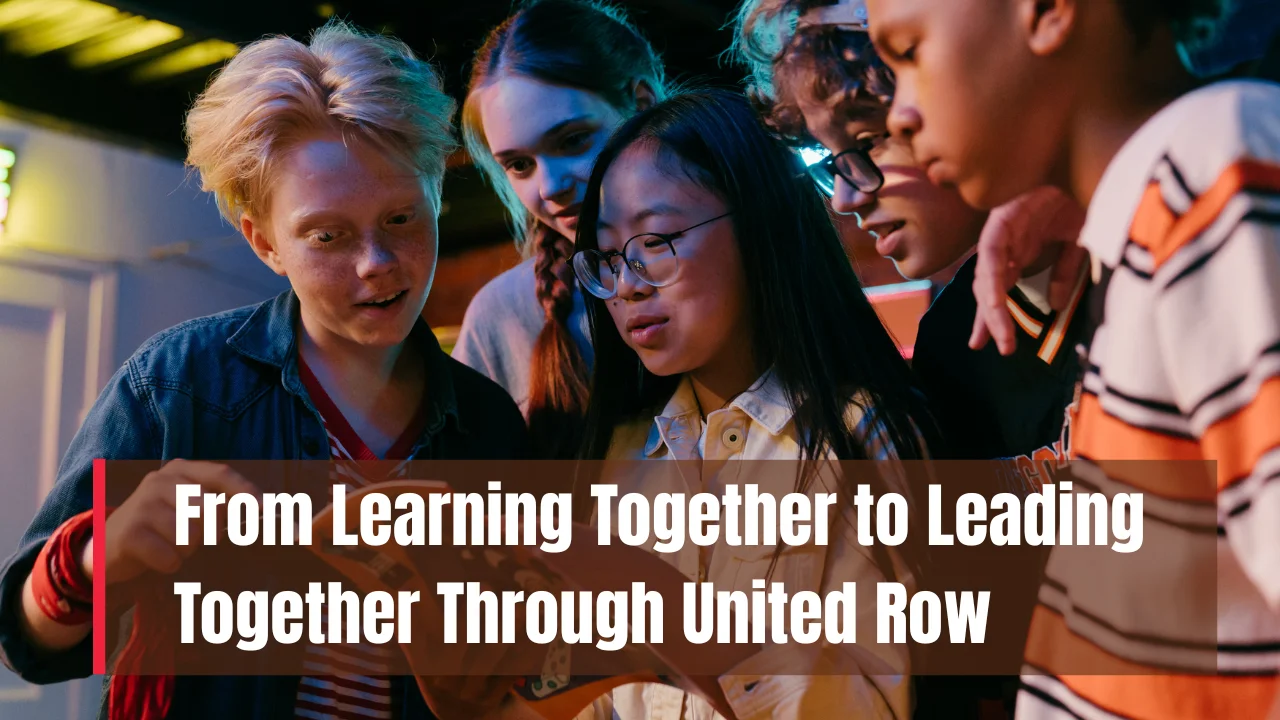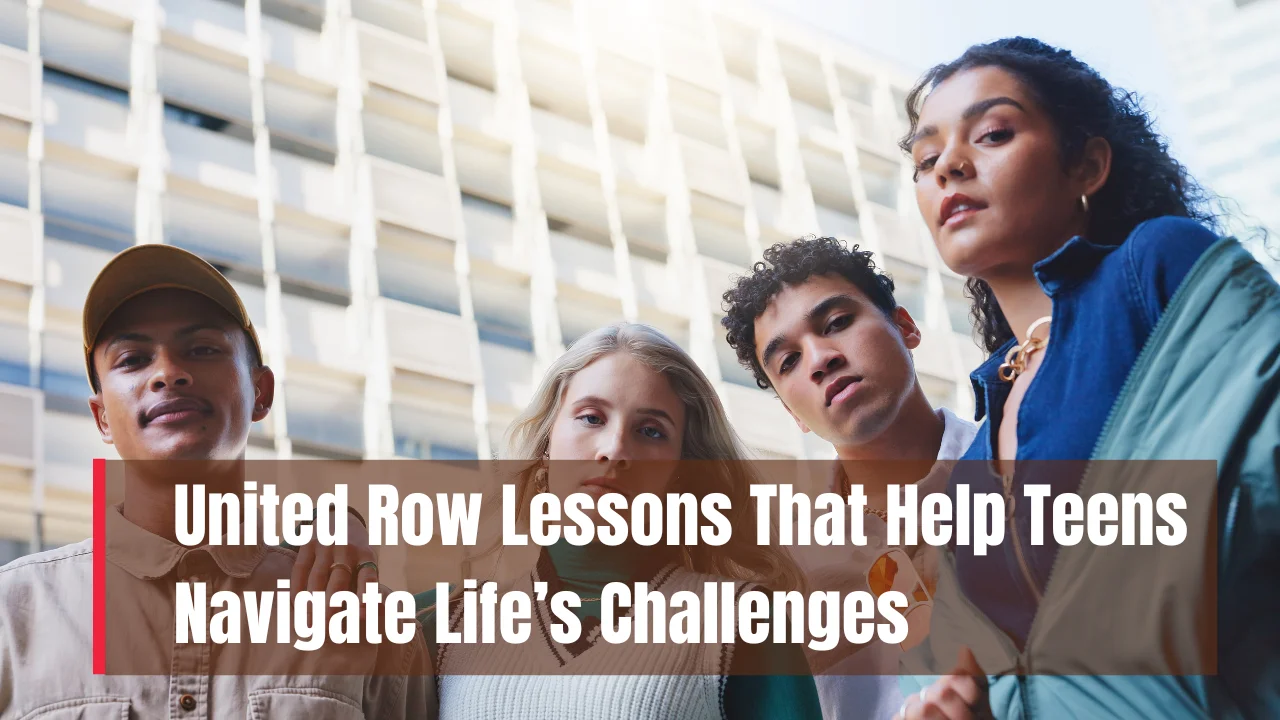United Row Programs: United Row Programs are reshaping how students learn about water safety in a world where drowning is still one of the leading causes of unintentional injury among youth. By combining structured rowing lessons with essential safety training, these programs go far beyond traditional physical education. They instill life-saving skills, build discipline, and create a unique educational experience that students remember.
This article dives deep into how United Row Programs are building confident, safety-aware students across schools and communities. It will walk through the core elements of these programs, their structure, benefits, and community impact. You’ll also find insights into why more educational institutions are adopting these programs and what kind of transformation they can bring to both individuals and the wider community.
United Row Programs and Their Impact on Student Safety
United Row Programs serve as a bridge between sport and safety, equipping students with real-world skills they can use around any body of water. These programs focus on helping students grow physically, emotionally, and mentally, all while learning about personal and group responsibility. By creating a structured, hands-on environment, students don’t just learn to row — they learn to protect themselves and others.
These initiatives are especially effective because they blend fun, fitness, and functional knowledge, making safety education more impactful than traditional classroom methods. Students gain leadership, awareness, and problem-solving skills, along with a deep respect for the water.
Overview Table
| Aspect | Details |
| Program Focus | Rowing and water safety education |
| Target Audience | Students aged 10–18 |
| Key Learning Areas | Water safety, teamwork, physical fitness, emergency skills |
| Structure | Land training, water sessions, safety drills |
| Community Involvement | Partnered with schools, clubs, and local organizations |
| Skills Developed | Confidence, endurance, leadership, awareness |
| Long-Term Benefits | Lifelong safety knowledge, fitness, and discipline |
| Accessibility | Adaptable for all experience levels and various locations |
The Role of United Row Programs in Water Safety
United Row Programs prioritize water safety by making it a core part of their curriculum rather than an add-on. Students are taught how to interpret water conditions, respond to emergencies, use flotation devices, and recognize risk factors. This is all delivered within the structure of rowing practice, making the learning process organic and relevant.
One of the standout elements is that students learn to act under pressure in controlled environments. They don’t just read about safety; they rehearse it, under expert guidance. Instructors provide real-time feedback and correction, making lessons more engaging and memorable. For many students, this approach fosters a sense of personal responsibility, something that theoretical learning often misses.
Why Schools Are Choosing United Row Programs
The rise in demand for United Row Programs in schools comes from their multi-dimensional value. Schools are recognizing that students need more than academic knowledge — they need practical life skills, physical activity, and emotional development. Rowing, as a low-impact but high-engagement sport, provides the perfect platform.
School administrators are also drawn to the adaptability of these programs. They can be tailored to fit the school’s schedule, resources, and student needs. Whether integrated into physical education or offered as an extracurricular, these programs deliver measurable benefits: improved attendance, higher student engagement, and better teamwork across classrooms.
Key Benefits of United Row Programs
These programs are built with student development in mind. Below are some key outcomes observed across participating schools:
- Improved Water Awareness: Students can identify hazards and make safe choices around lakes, rivers, or pools.
- Boost in Confidence: Kids feel more in control and less fearful around water.
- Physical Health: Rowing improves cardiovascular health, posture, and muscle strength.
- Better Focus and Discipline: Rowing requires coordination and concentration, skills that help in academics.
- Emotional Growth: Working in teams, handling stress, and achieving goals promotes resilience.
These benefits go beyond the classroom, affecting how students behave in other parts of life, including family and social environments.
How United Row Programs Are Structured
Each United Row Program follows a clear path from basic to advanced training. The structure usually includes:
- Introductory Lessons on Land
Students learn about boat safety, rowing mechanics, and teamwork strategies. - Water-Based Training
Under supervision, students practice real rowing techniques in safe environments like calm lakes or school pools. - Safety Drills and Emergency Response
Students rehearse what to do in case of accidents, including capsizing, collisions, or falling overboard. - Review and Reflection Sessions
Progress is tracked and students are encouraged to reflect on what they’ve learned to reinforce safety habits.
This balance of theory, practice, and reflection ensures every student walks away with a strong skill set and a deeper respect for water environments.
List of Core Elements in United Row Programs
Here’s what students can expect to gain from participating in a typical program:
- Correct Rowing Techniques
- Water Hazard Identification
- Life Jacket Usage and Fitting
- Basic Swimming and Rescue Skills
- Emergency Signal Training
- Team Coordination and Timing
- Situational Awareness
- Leadership Practice During Drills
These elements are not only vital in rowing but also in everyday life when near water. The mix of physical and mental learning helps make these lessons stick.
Community Impact of United Row Programs
Beyond schools, United Row Programs positively influence entire communities. When children become water-safety aware, families often adopt safer habits as well. This ripple effect means fewer water accidents, stronger community trust, and a healthier, more active youth population.
These programs often encourage parental involvement and partnerships with local rowing clubs, emergency services, or aquatic centers. Such collaboration boosts public awareness and promotes broader discussions about safety, fitness, and youth empowerment.
Programs have also been linked to improved mental health among students, especially those who struggle with traditional learning environments. The sense of accomplishment and routine that comes with rowing can be a stabilizing force in a young person’s life.
Future of Water Safety Through United Row Programs
As technology and teaching methods evolve, United Row Programs are keeping pace by adding digital tools to their training. Some now offer virtual simulations, online water safety modules, and even rowing machines with interactive training for schools without water access.
Looking ahead, these programs are expected to expand into more regions, especially underserved communities. With increased support from governments and nonprofits, the goal is to make water safety education a standard part of school life nationwide.
The focus is not only on reducing accidents but on shaping a culture where safety is second nature, and every student feels prepared and empowered.
Final Thoughts
United Row Programs are far more than athletic courses. They are carefully crafted experiences that equip young people with vital safety knowledge, physical strength, and emotional maturity. These programs prepare students not just for success in school, but for life.
In a world where water is both a source of joy and danger, these programs act as a protective force. If your school or community hasn’t explored these options yet, now is the time to take that step. Every stroke on the water is a move toward confidence, health, and safety.
We’d love to hear from you. Have you or your school experienced a United Row Program? Share your story, leave a comment, and don’t forget to explore more articles that promote youth empowerment and safety.
FAQs
They are designed to teach water safety, rowing techniques, teamwork, and emergency response skills in a hands-on, engaging way.
Not necessarily. Many programs start with basic water confidence and safety, progressing at each student’s pace.
Yes, there are modified programs available for students as young as 10, focusing on safety and introductory rowing skills.
Yes, land-based training and indoor rowing machines are often used where open water isn’t accessible.
Program lengths vary but often run for 6 to 12 weeks, depending on the school schedule and learning objectives.












